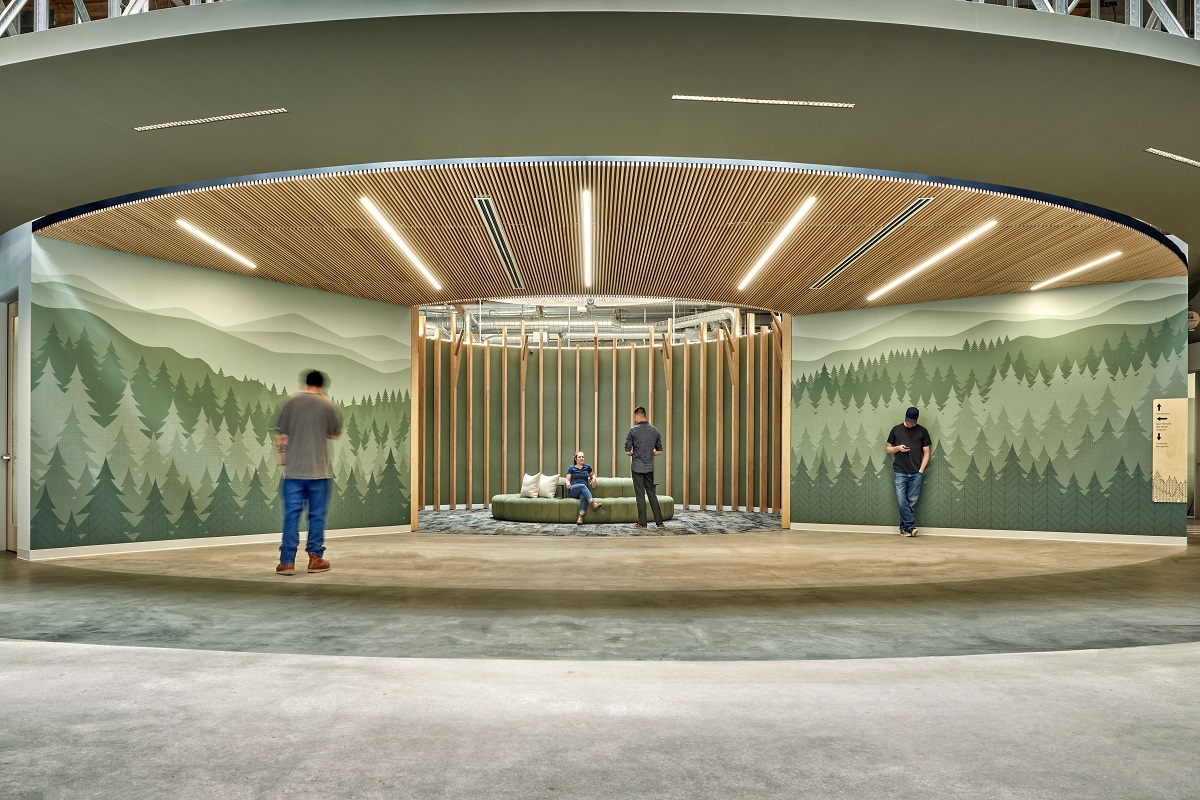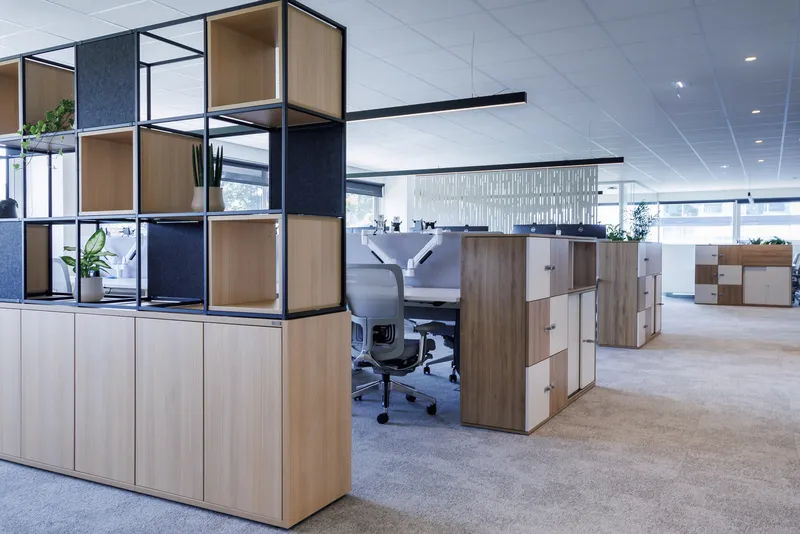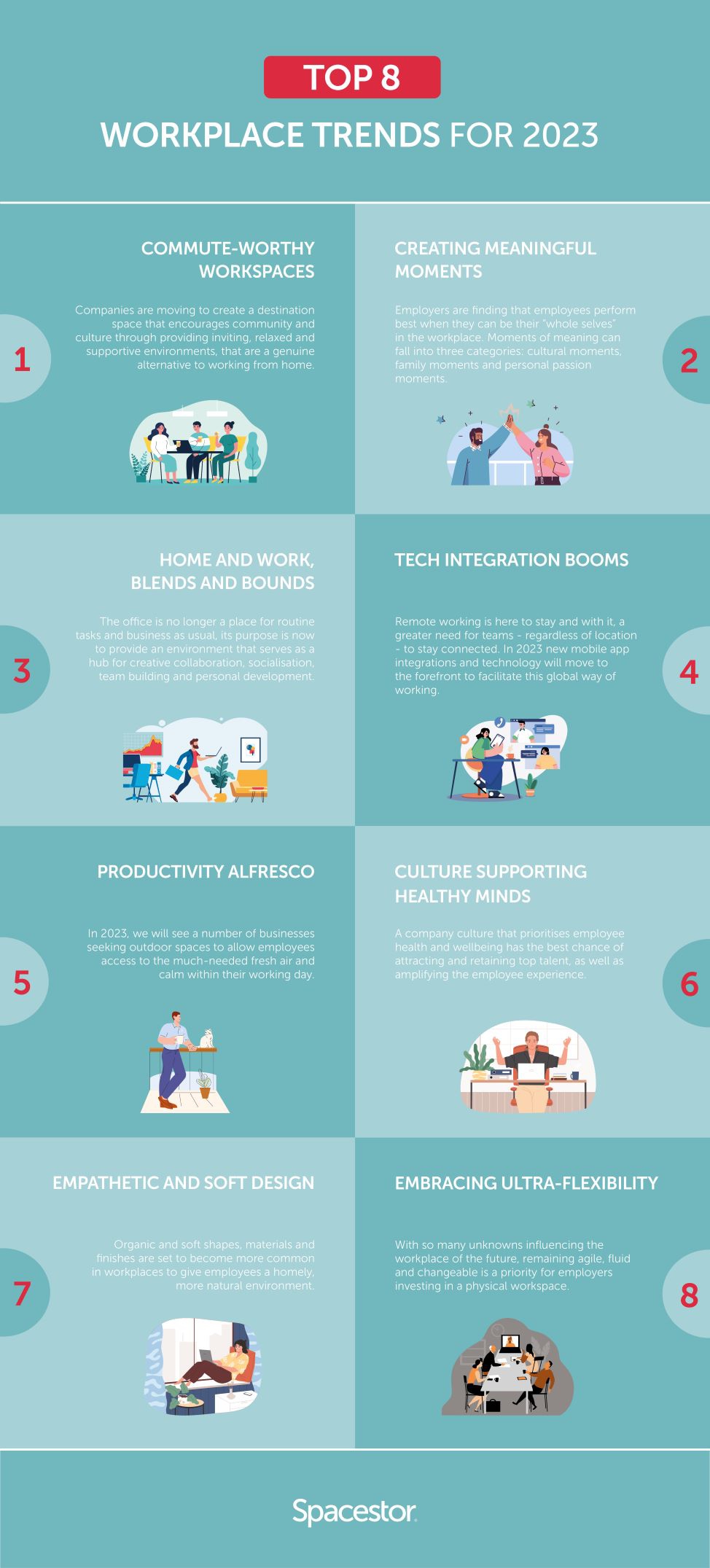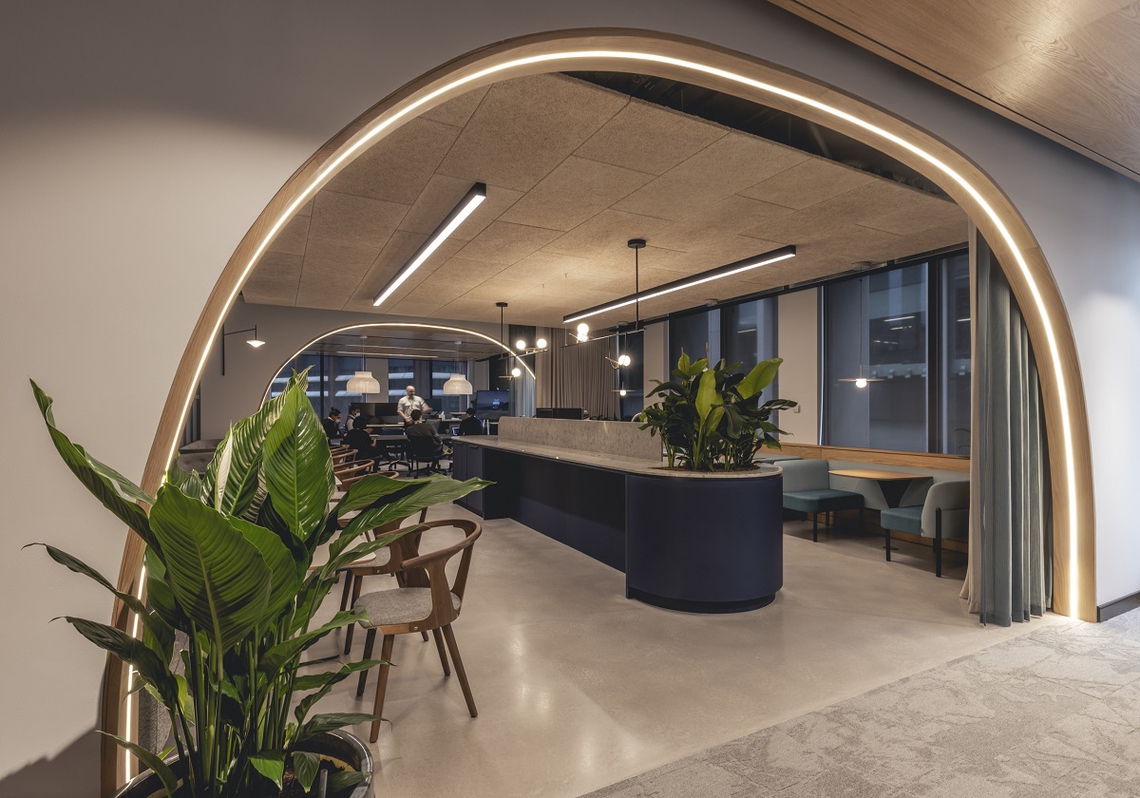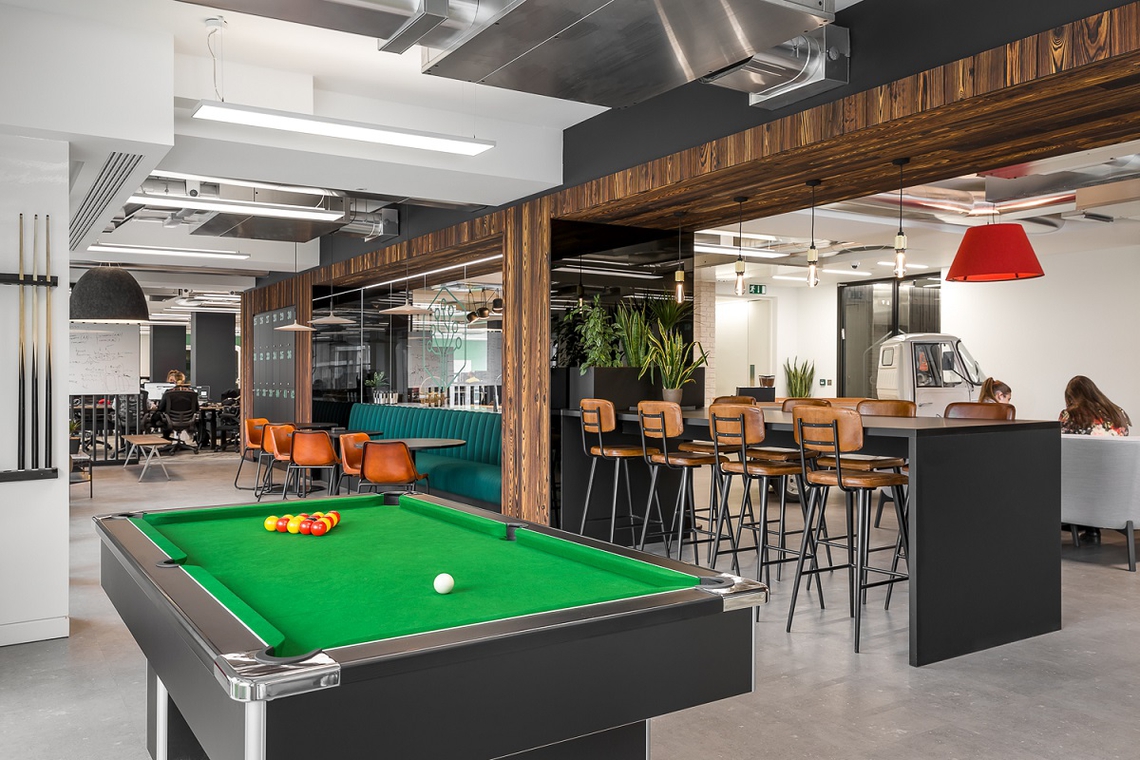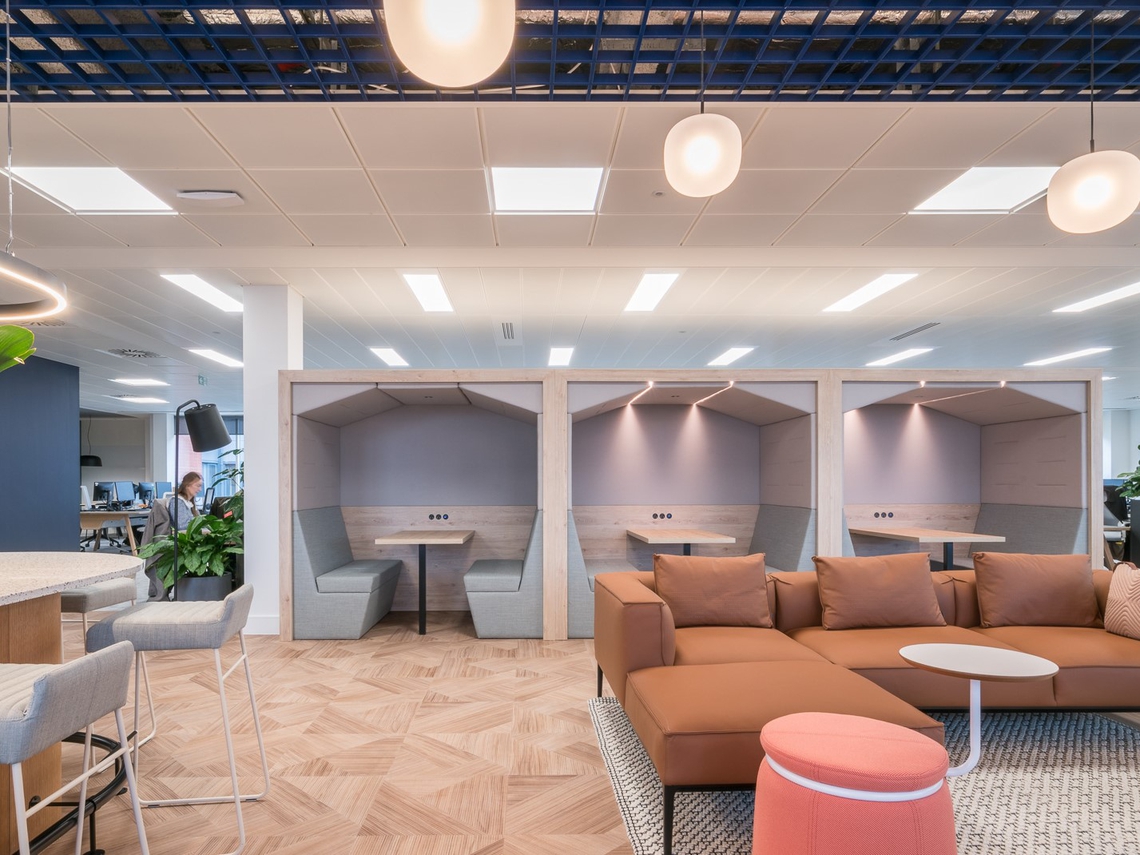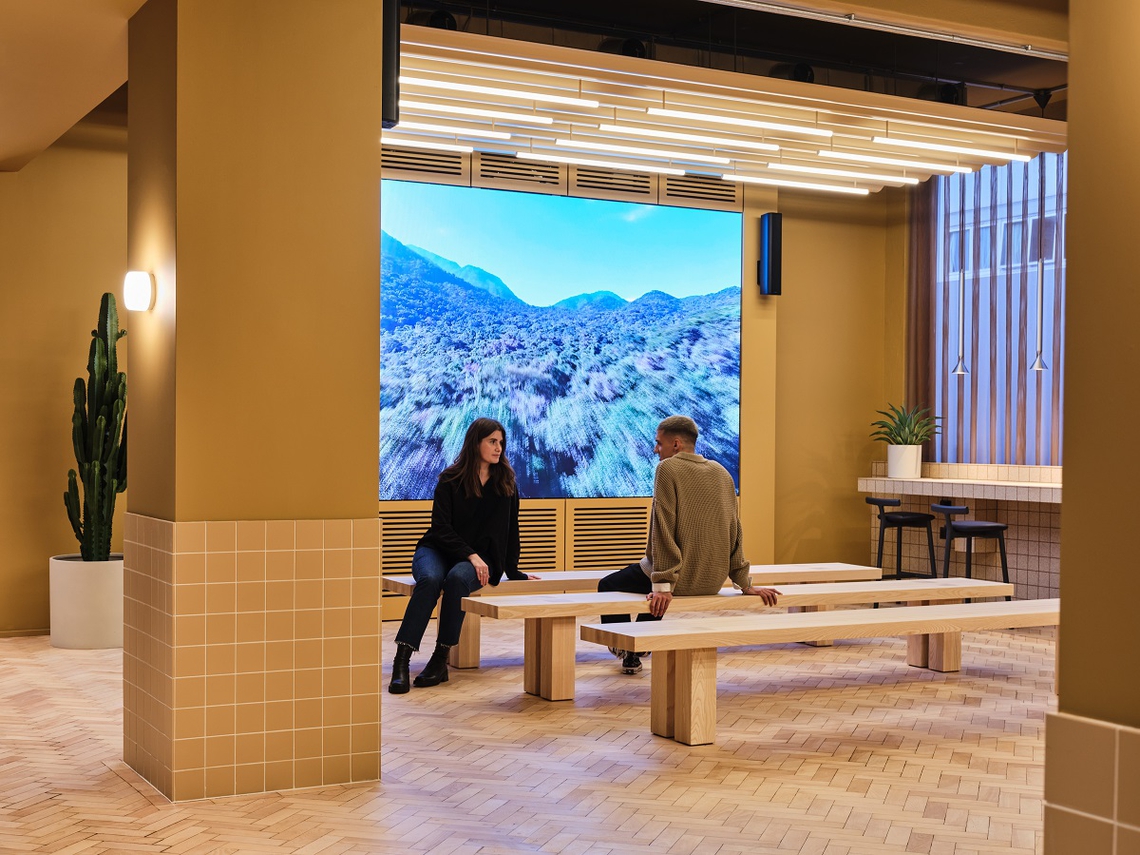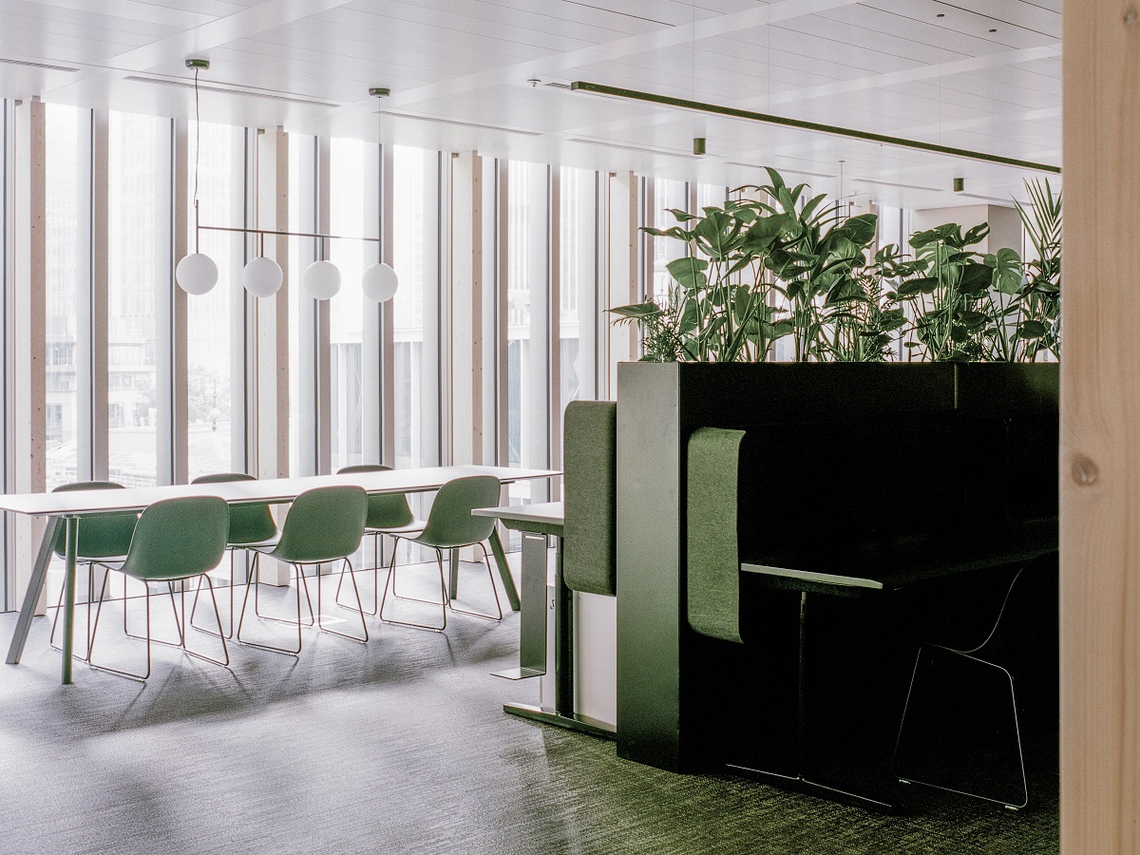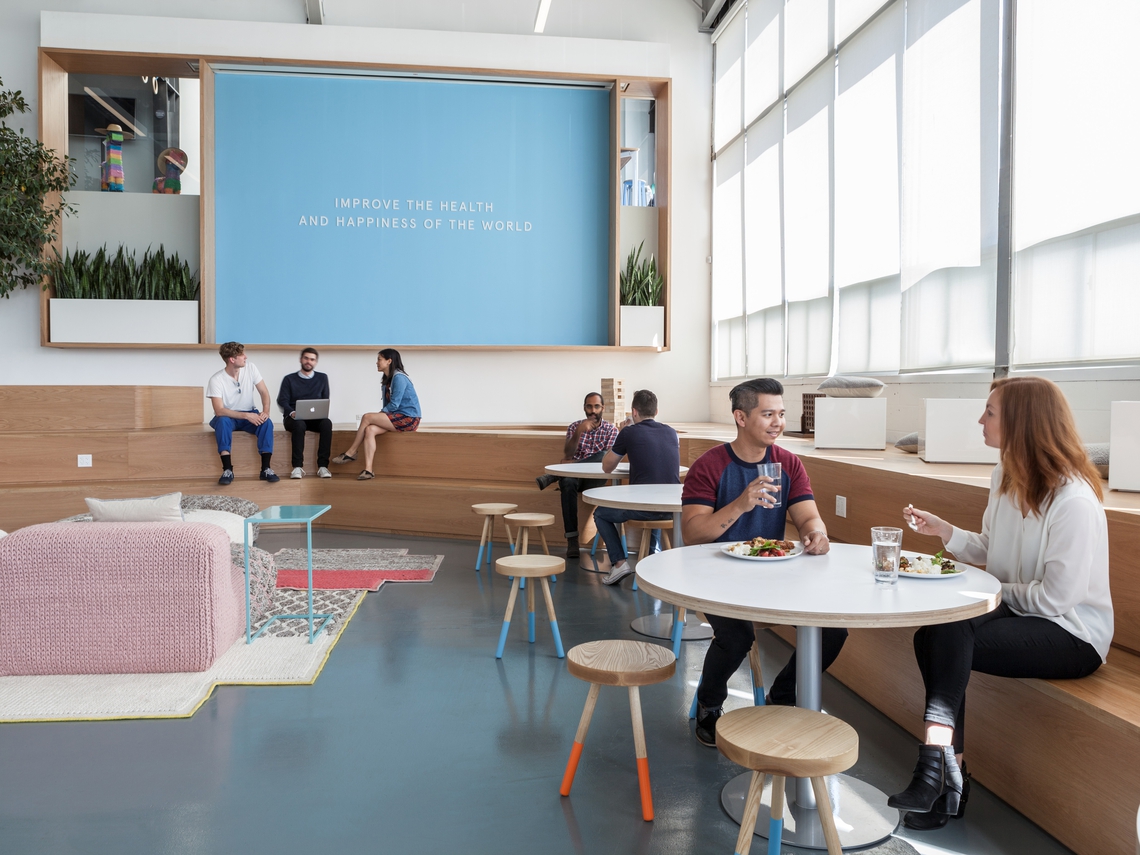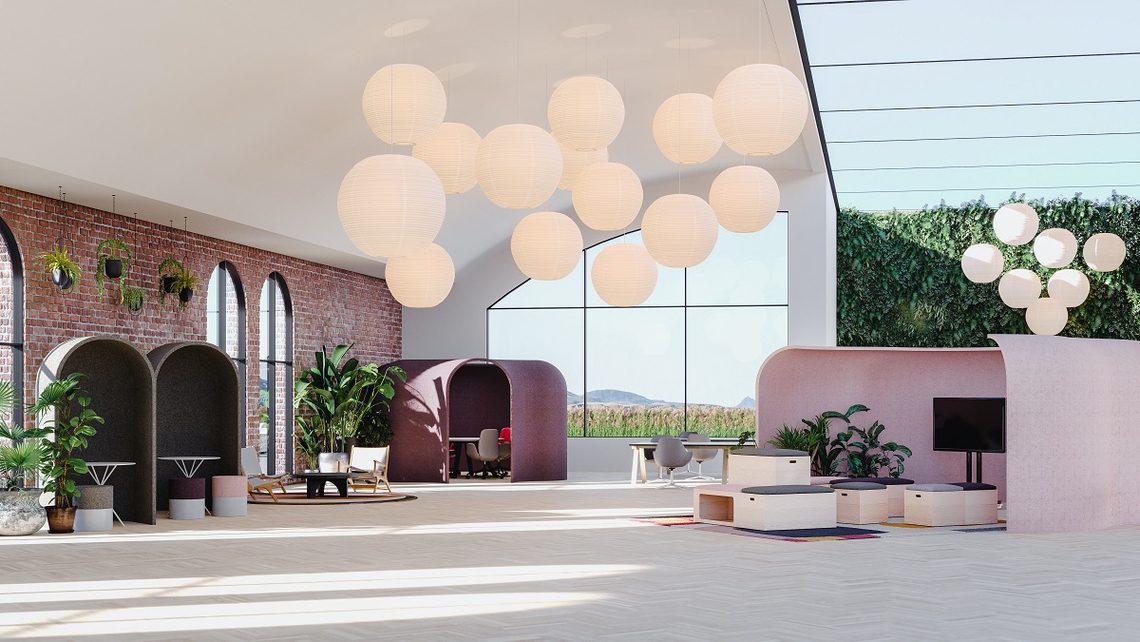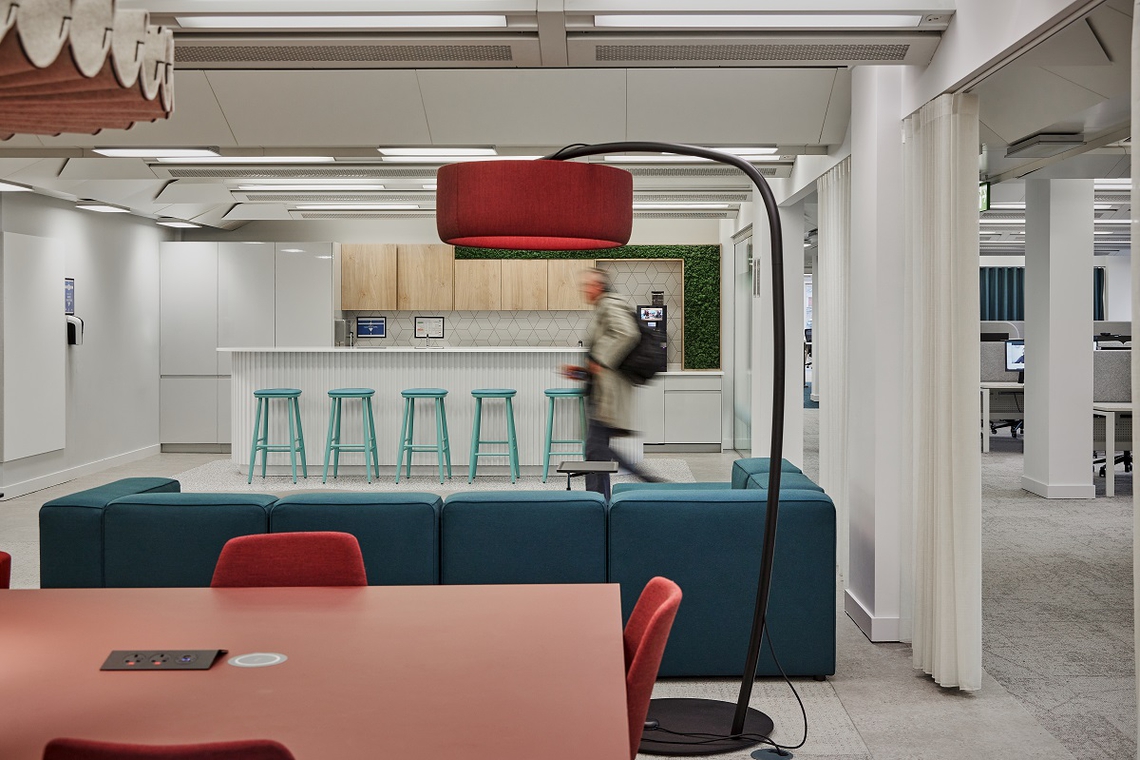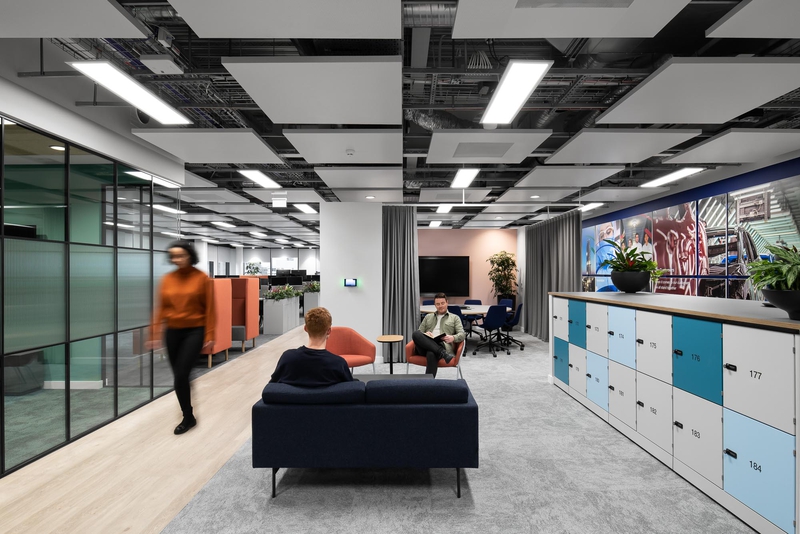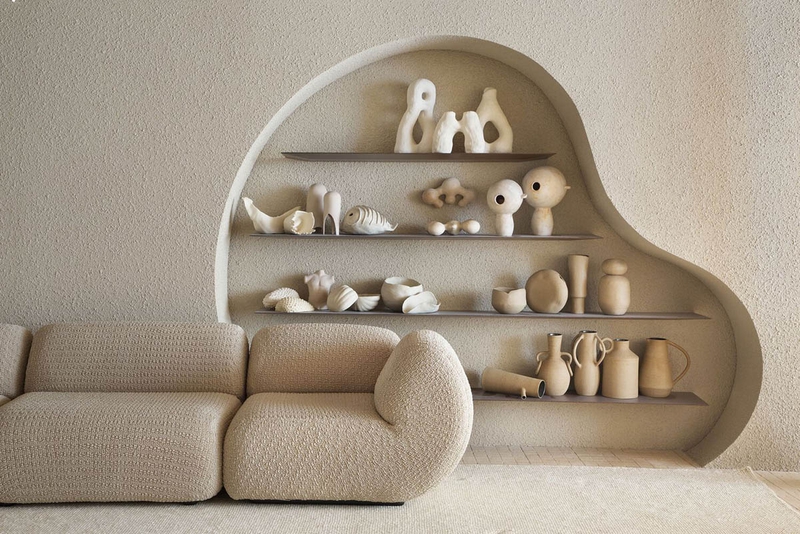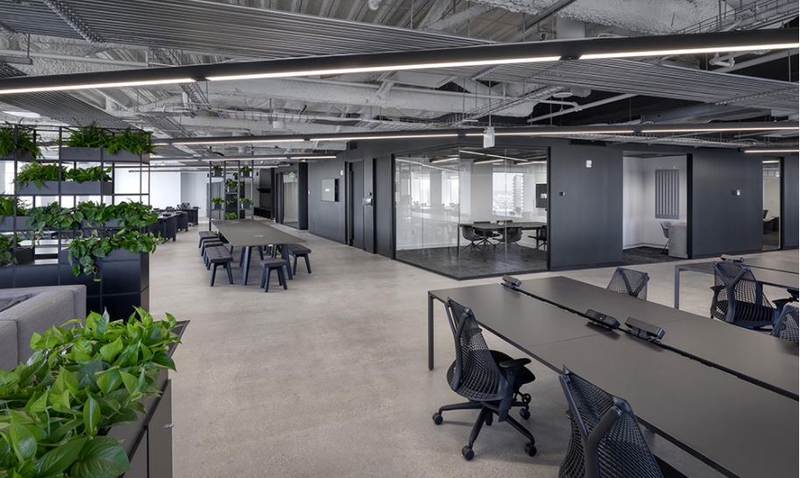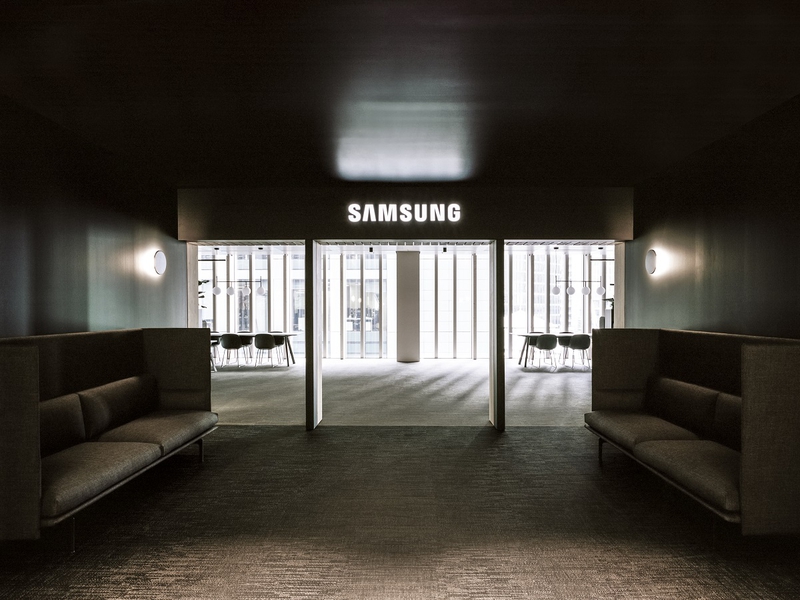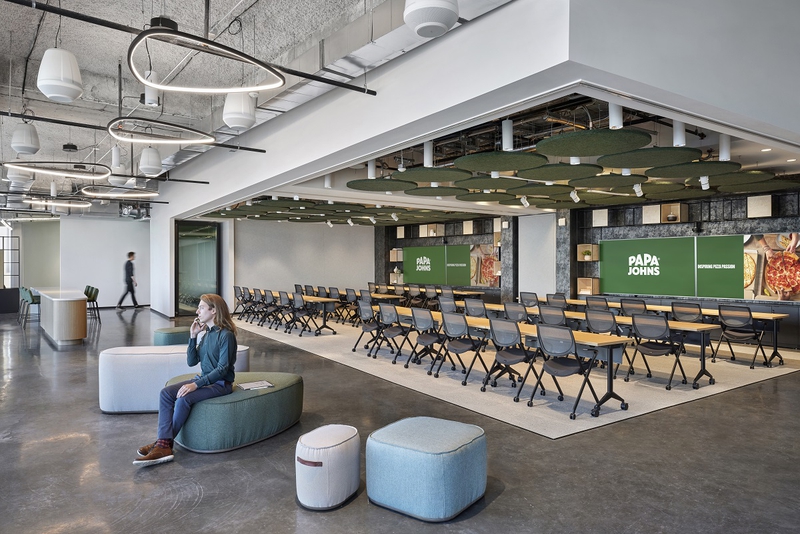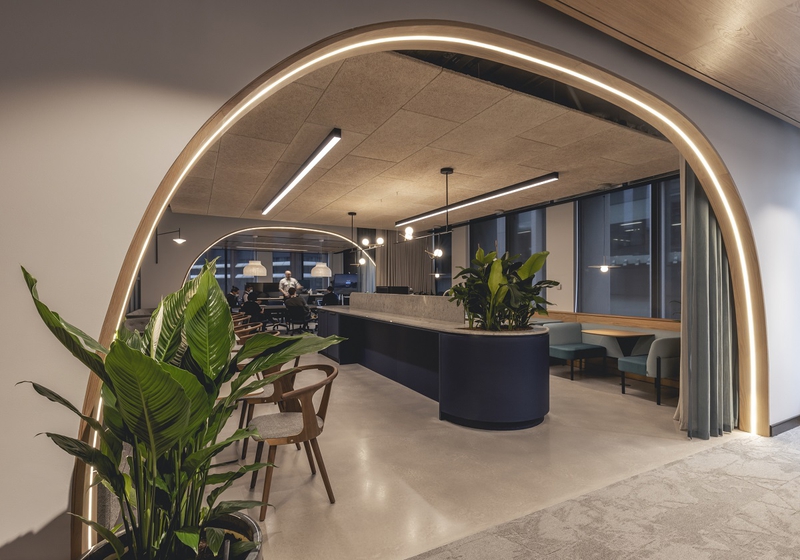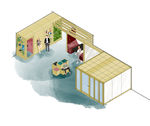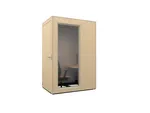14 Dec 2022
Industry Trends
Another year is drawing to a close and if there’s one thing that we’ve learned throughout 2022, it’s that the role of the workplace is continuing to evolve quicker than ever before. With many companies encouraging returns to the office and others shifting to remote work, the office and its purpose has changed and businesses across the globe are moving to prioritise flexibility, empathy and wellbeing.
With all that we’ve learned, it’s time to focus on the future as we look at the top 8 trends that we expect to see dominate the workplace in 2023.

1. Commute-worthy Workspaces
The office is no longer an obligation for employees who can largely choose how and where to work – but in 2023 we’ll see more workers deem it a preference. The only way to get employees back into the office is by making it a commute-worthy destination space that stands out. Through designing attractive workspaces that burst with personality, culture, amenities and functionality, employees are likely to choose to commute to the office and employers who invest in their environment will reap the benefits.
Fresh from the ‘Great Resignation’, more and more organizations looked to their workspaces to help with staff retention and beating their competitors to the pick of the talent pool. Noting that remote workers had struggled with loneliness, lack of belonging and feeling disconnected, companies are moving to create a destination space that encourages community and culture through providing inviting, relaxed and supportive environments, that are a genuine alternative to working from home.
Our work with AstraZeneca showed the value of creating a sympathetic workspace and a home away from home, and the new Domestic & General offices reflected employee needs by putting community at its heart.
2. Creating Meaningful Moments
Employers are finding that employees perform best when they can be their “whole selves” at the workplace. Yet today, one-third of employees still feel that their employer doesn’t encourage them to be themselves. A greater focus on authenticity and acceptance in the workplace will help talent attraction and retention in 2023, especially as a younger generation enters the workplace with greater expectations for their employers to treat them as a customer and help them to create meaningful moments and experiences.
Generally, moments of meaning can fall into three categories: Cultural moments, family moments and personal passion moments. For cultural meaning, employers can create a more human workplace by being open and more understanding to their employee’s faith, traditions and social needs, as well as encouraging diversity and inclusion. To increase family meaningful moments, employers will need to acknowledge that the definition of family has changed and improve policies in areas such as parental leave, childcare, bereavement and even pet care. For personal passion moments, employers will need to show a vested interest into their employees’ hobbies, values and passions outside of work and get to know their teams better. Hosting talent shows, encouraging volunteer and team building days are just some of the ways we can expect to see this manifest in 2023.

3. Home and Work, Blends and Bounds
During the pandemic, newly remote employees struggled to maintain a separation between their work and home life. Now, with post-pandemic returns to the office complete, the line between work and home is more blended than ever before. Although there’s still a large number of employees working from home, 2022 has seen a shift into hybrid ways of working. In 2023, more employees will choose a hybrid working pattern, seeking out the benefits of a physical location while still having the freedom to choose to work remotely when they need to.
Although in 2023 we expect to see power swing back to employers – as the last few years have seen businesses fight for talent – even in a downturn, it will be up to businesses to help facilitate this migration back into the office through supporting employees who have been working remotely. There are a number of ways that employers can make this transition easier for employees, but understanding that the role of the office has changed is the first step. The office is no longer a place for routine tasks and business as usual, its purpose now is to provide an environment that serves as a hub for creative collaboration, socialisation, team building and personal development. In 2023 we will see many more organisations recognise this and adapt their environments accordingly.
4. Tech Integration Booms
The pandemic saw an exponential rise in the popularity of mobile apps and technology to support newly remote workers. Although in 2023 a hybrid way of working looks set to become the norm, remote working is here to stay and with it, a greater need for teams - regardless of location - to stay connected. As remote, cross-region and international teams find new ways to work together efficiently, in 2023 new mobile app integrations and technology will move to the forefront to facilitate this global way of working.
Productivity apps such as Asana, Slack and Basecamp will continue to rise in popularity, allowing communication, engagement and project management to thrive even when teams are working in various locations and timezones. We also expect to see strides forward in new technology such as the Metaverse, which will revolutionize the way remote teams stay in touch.
This level of app integration has already begun to influence workspace design, with meeting room booking, desk reservations and locker allocation becoming increasingly embedded in a company’s ways of working. This level of flexibility enables a truly hybrid workforce to become even more agile.

5. Productivity Alfresco
One of the ways we’re seeing companies encourage greater levels of wellbeing, productivity and engagement in the workplace is through the use of biophilia and outdoor spaces. Terraces, balconies and courtyards not only offer an extra space for employees to socialize and relax, but they encourage greater health and wellbeing through an increase in access to natural lighting, offering much-needed respite from computer screens and noisy offices.
This trend has been building throughout 2022, with organizations such as The Office Group opting for neutral, earthy tones throughout the office and even introducing an Oxygen Room to boost employees’ moods whilst connecting with nature. In 2023, we will see a number of businesses seeking outdoor spaces to allow employees access to the much-needed fresh air and calm within their working day.

6. Culture Supporting Healthy Minds
The wellbeing and mental health of employees rocketed to the top of the executive agenda in the last couple of years and will continue to be crucial to talent attraction and retention going forward. As a new generation of health-conscious workers enter the workplace and an increasing number of people report a disability that is largely driven by an increase in mental health conditions, the importance of investing in wellbeing for employees is only growing.
A company culture that prioritises employee health and wellbeing has the best chance of attracting and retaining top talent, as well as amplifying the employee experience. Workspace design can really support healthy minds through adopting biophilic design principles, tackling tech fatigue, encouraging healthy habits, and zoning spaces to create focus areas for those in need of a quieter environment. Meditation app provider, Headspace, embedded these in their new California headquarters, providing a space that encourages movement and champions natural lighting.

7. Empathetic and Soft Design
As creating a kinder, more empathetic workspace increases in importance, organic and soft shapes, materials and finishes are set to become more common in workplaces to give employees a homely, more natural environment. A renewed focus on empathy, kindness and supporting employees in the workplace and beyond extends past organic materials to give employees a feeling of ease.
Another element to soft design is bringing the home into the office, with which businesses can replicate that same sense of belonging, relaxation and security for employees when transitioning into hybrid work models. When using organic forms in the workplace, designing furniture pieces with curves, and circular features such as the Aeonica can transform an office into a more natural, welcoming environment, and we’ll see more bustling offices opting for a softer, calmer workspace design in 2023.
8. Embracing Ultra-flexibility
As the hybrid way of working becomes more commonplace, ultra-flexibility will be a main driver for employees and employers alike in 2023. With so many unknowns influencing the workplace of the future, remaining agile, fluid and changeable is a priority for employers investing in a physical workspace. The solution for uncertainty is the use of flexible, modular, and customizable designs that allow for multiple configurations in the office.
Modular sofa systems, flexible partitions and foldable desks that fit together like a puzzle, expanding and compressing according to capacity can help businesses stay ultra-flexible. Likewise, this level of agility will be key to encouraging workers back into the office, allowing them control over their surroundings and real design choice. With the number of people in a workplace at any given time unpredictable, dynamic and flexible furniture and fittings accommodate impromptu interactions for large groups and small teams alike.

Share this article
